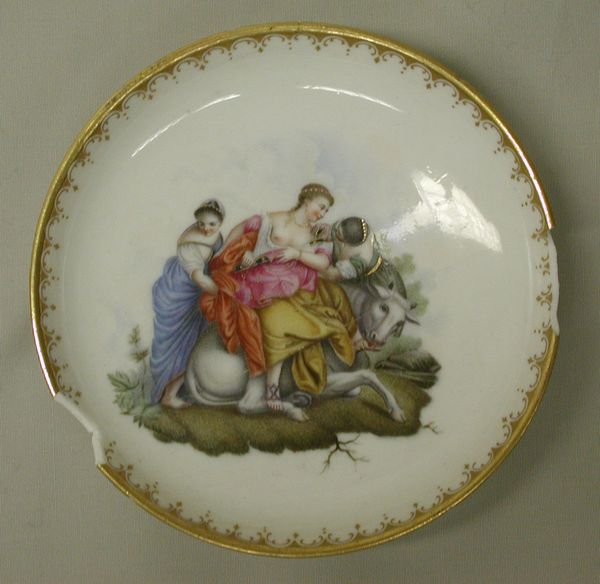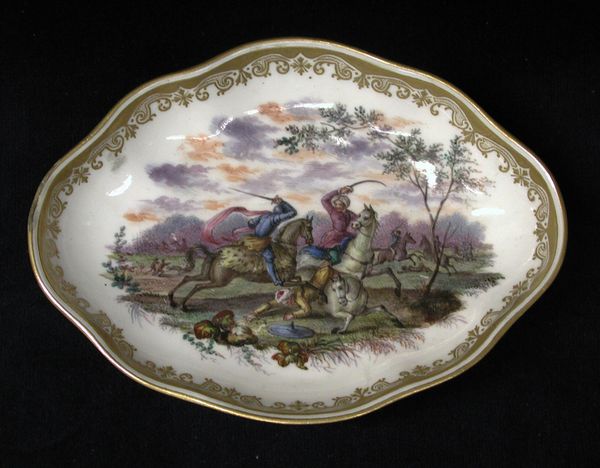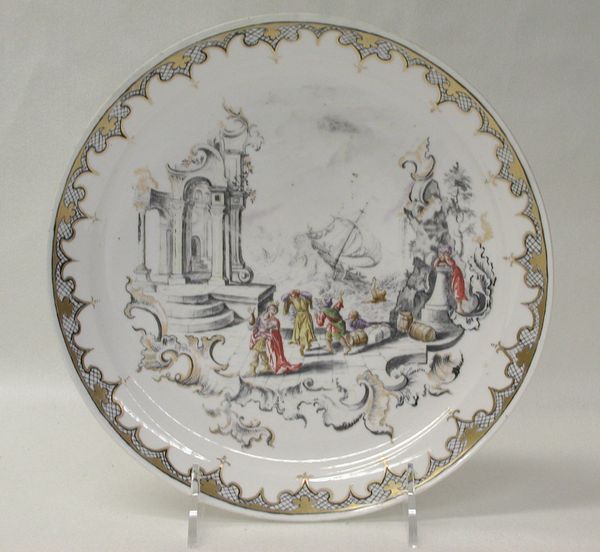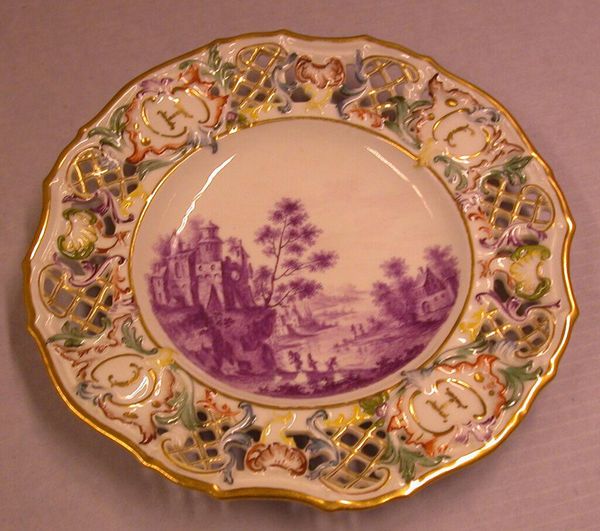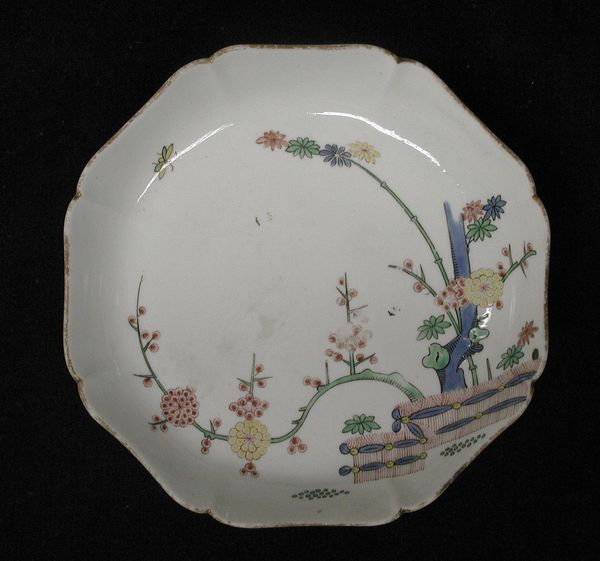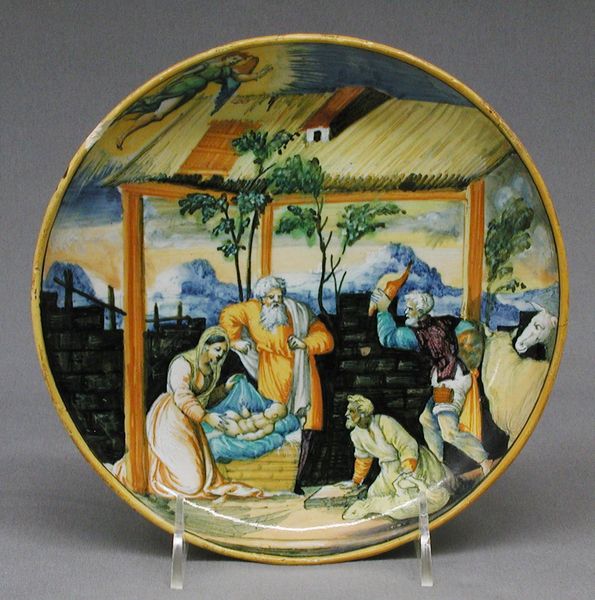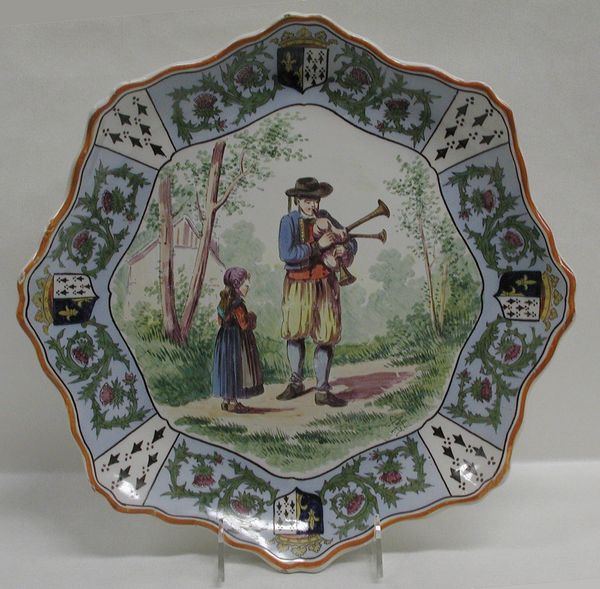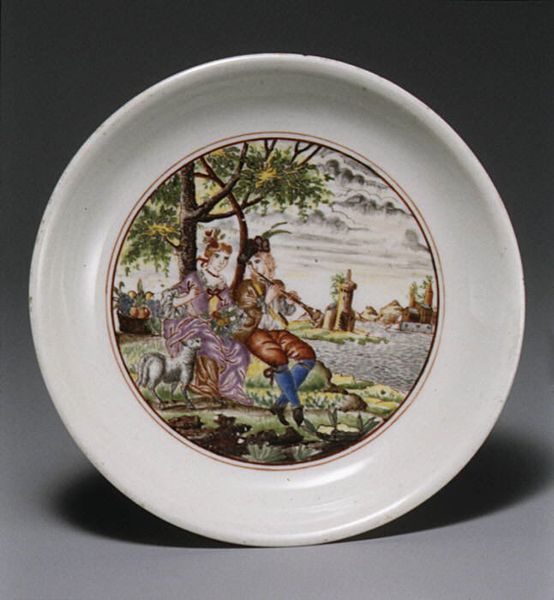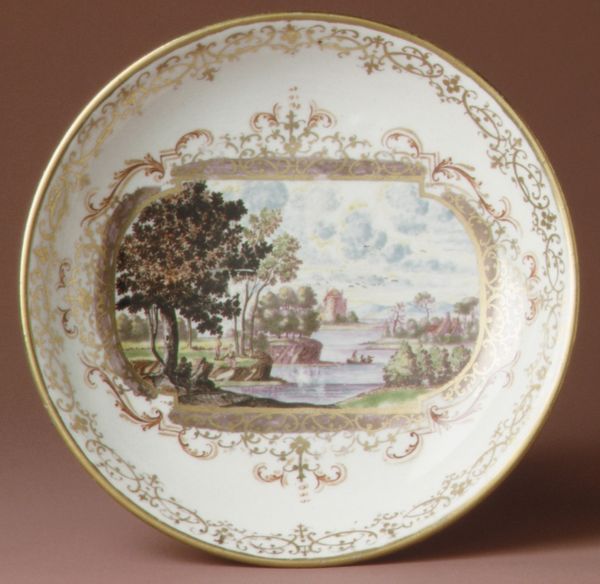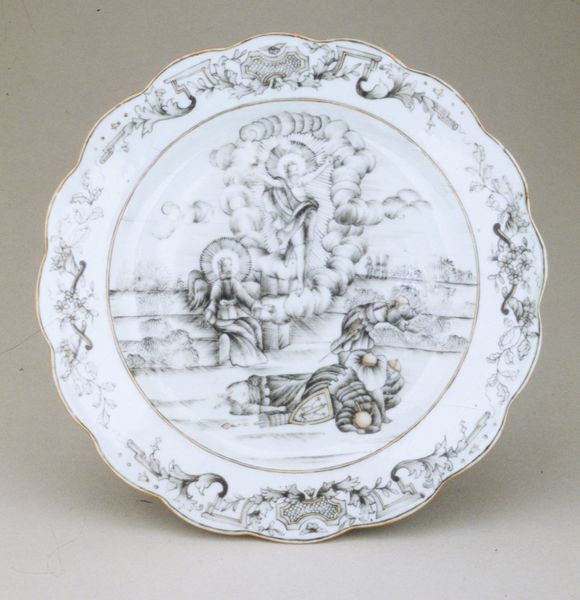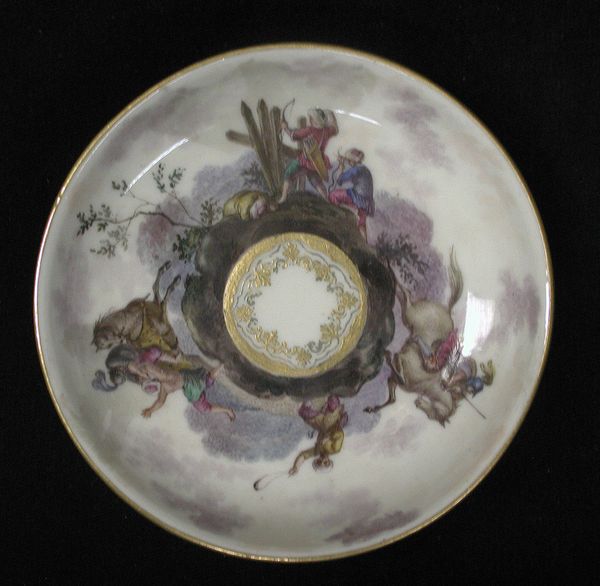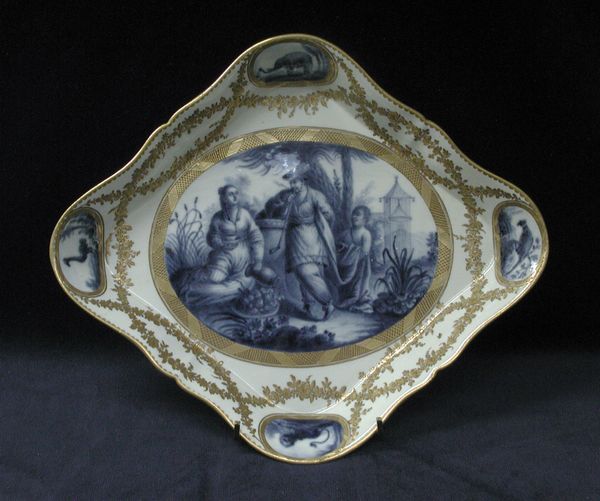
Saucer (part of a service) 1760 - 1765
0:00
0:00
painting, ceramic, porcelain, sculpture
#
decorative element
#
painting
#
landscape
#
ceramic
#
porcelain
#
figuration
#
intimism
#
sculpture
#
ceramic
#
genre-painting
#
decorative-art
#
decorative art
#
miniature
#
rococo
Dimensions: Diam. 4 3/4 in. (12.1 cm.)
Copyright: Public Domain
Editor: This is a porcelain saucer, part of a service, made by Nymphenburg Porcelain Manufactory between 1760 and 1765. What strikes me is the intimate scale and the almost theatrical scene painted within its borders. It's Rococo, of course, but it feels like there’s a deeper story hidden. What do you see in this piece? Curator: It’s more than just decorative, isn't it? The “Turkish taste,” or Turquerie, was fashionable, but its representation speaks volumes. Think about the power dynamics inherent in depicting Ottoman figures on European tableware. It served a very specific purpose to create narratives of 'otherness', in effect, affirming European identity. Who gets to create the image? Who benefits from this visual language? Editor: So, it's not just a pretty object but a political statement disguised as decoration? Were these images accurate representations? Curator: Accuracy wasn’t really the point, was it? The imagery, however fantasized, reinforced existing prejudices. The “exotic” East becomes a projection screen for European anxieties and desires. Look at the figures – how are they posed, costumed, and situated within the landscape? Editor: Now that you mention it, they do seem like characters in a play, somewhat stereotyped, but also individual. I’m seeing more complexity now. Curator: Exactly. These objects played a significant role in shaping cultural perceptions. Reflecting on what seems mundane reveals how art implicates power relations and historical biases, even in a simple saucer. It reminds us to look critically at even the most ornamental surfaces for historical and cultural cues. Editor: I see how examining an object like this really opens up wider discussions about representation and cultural exchange. Curator: Precisely. It’s about engaging in a constant, critical dialogue with the past to better understand our present.
Comments
No comments
Be the first to comment and join the conversation on the ultimate creative platform.
